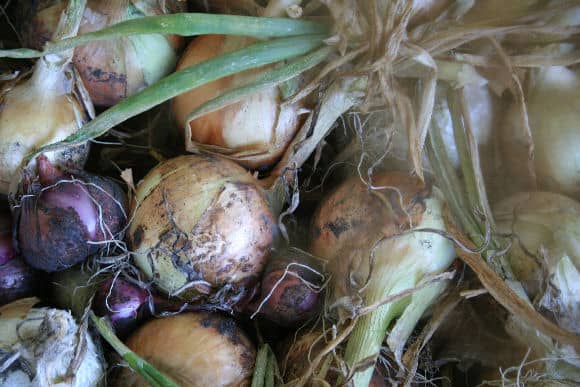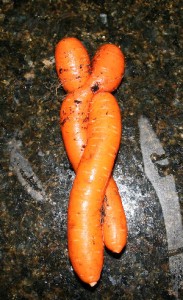Diversity in the garden is vital. Remember this when you’re planning your purchase. The more varieties and types, the better.
You’d think a bunch of grown people with three advanced degrees among them would be able to puzzle out the seed catalogs, but no – we’re still in the throes of such debates as which varieties of lettuce to plant, whether kale is going to actually get eaten here (I say yes if I bake it into chips; the menfolk are doubtful that a kale chip will actually be edible), or whether to plant white onion, yellow onions, or red onions.

Yes, you read that right: white, yellow, red. Big, small, tender, sweet, make your eyes cry onions. Did you even know they came in so many types? Other than a Blooming Onion at Outback, when’s the last time you actually considered the taste, the merits of the ubiquitous onion?
I spread all the gardening catalogs out on the kitchen table open to the onion pages. We can choose seeds or sets, single varieties or variety packages that provide some of each type. The question that others in the household keep asking, however, is:
“Will we like them?”
And that’s really the kicker, the point at which I stop, peer into the crisper drawer of the refrigerator at the string bag of onions from the supermarket, and I wonder.
When did we go from pages and pages, dozens and dozens of varieties to one or two, or maybe three if you’re lucky, of types available at the grocery store?
The plant world is chock full of genetic diversity. Plants, like people, thrive on genetic diversity. And what nature didn’t provide we clever humans coaxed out of the plant kingdom, crossing this and that to get something new, hardier and tastier.
Yet all across the country and indeed now in most parts of the so-called “civilized’ world we think of vegetables the way we used to think of factory widgets. If they’re not all the same size, shape and taste meal after meal, we think something is wrong. Peas all have to be the same size and in a can. Green beans must all be snipped to a regulation quarter of an inch, no more, no less. Carrots must be peeled, coined and orange. Bet you didn’t know you can find white carrots or purple ones, did you? The Romans apparently loved white carrots.
 |
| You won’t find this in stores, kids! |
But we have so commoditized the simple act of eating to the point that most children, if not exposed to a garden early in life, think vegetables are ‘yucky’ and won’t eat them unless they come out of a can with a label they recognize. I remember when my godson visited this past summer. He pulled a carrot right from the garden. He watched me pull, clean and cook beets. It was the first time he has ever tasted a beet and he will be 8 years old this month. Beets don’t taste so good from the can, but from the garden? He kept saying, “Mommy, this is yummy! You should make these too!”
I know that myriad economic factors encourage growers to grow the same varieties. There are varieties that store longer, ship better, and achieve a uniformity that consumers have been trained to expect. But I cannot help but wonder at what a diversity of color, texture and taste the average person missed when they only buy prepared, packaged foods.
As I linger over the gardening catalogs, I’m faced with a cornucopia of choices. The only way to truly answer my family’s question – “Will we like it?” – is to grow it. And grow it we shall.
Now, which ones to choose? Questions, questions….





Love those carrots together.
If you has space an resources, try as many as you can. Onions are on those easy rewarding veggies to grow. I have trouble with the red onions here. Not sure why.